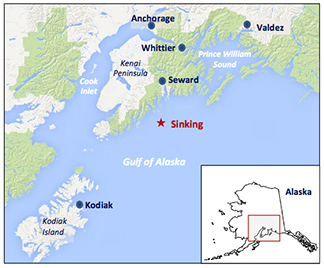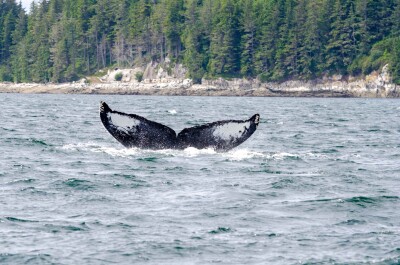On Sept. 20, 2012, the 107-foot Moonlight Maid sank about 55 miles south of Seward, Alaska. No lives were lost, but it was a sinking that didn’t have to happen.
The 72-year-old Moonlight Maid had a fairly long life for a wooden fishing boat. She was built in 1942 at Peterson Boat Works in Sturgeon Bay, Wis., as the USS PC-0536, a 110-foot sub-chaser. After its wartime duties ended, the sub-chaser was transferred to the Coast Guard and renamed the Air Cormorant.
Then in 1951 a Seattle fisherman purchased the Air Cormorant, changed the name to Moonlight Maid and lopped off three feet of her length. Ownership changed several times, but for the past 30 years or so, the Moonlight Maid was operating out of Valdez, Alaska, as a salmon tender for the Prince William Sound salmon fleet, from late May to early September.
It’s not a fishery where a boat is going to suffer a lot of abuse, and weather wise it takes place during a mild time of year.
The Moonlight Maid had undergone some extensive repairs. Two years before she sank, the owners replaced 40 planks and rebuilt the transom. The repairs were said to have “addressed the worst rot and damage the boat currently had but did not address everything,” according to the National Transportation Safety Board Marine Accident Brief.
In September 2012, the Moonlight Maid’s deck was repaired, but the repairs did not address the “most serious recommendations” from the previous work. That included framing that should have been replaced.
On the morning of Sept. 20, the Moonlight Maid steamed away from Seward and out Resurrection Bay toward Kodiak 175 miles away. She was running into seas up to 12 feet, and the wind gusted to 27 knots.
Seven hours later, water was rising in a space before the engine room and a 3- to 4-foot length of planking was missing on the port side, and another section, 10 to 12 feet long, was loose. Four hours later the crew got into the life raft, and about two hours after that a Coast Guard helicopter hoisted them off the raft.
The Moonlight Maid sank in 100 fathoms of water near Seal Rock. Again, it didn’t have to end that way. Take care of a wooden boat and it can fish for a long time. A good example is the halibut schooners, several of which are more than 100 years old.
In all probability the planking let go because the frames were rotten and, perhaps, the fastenings were corroded. If you don’t maintain a boat — any boat, not just a wood boat — she will sink. As the NTSB determined, “contributing to the hull failure was inadequate maintenance of the aging wooden vessel.”







